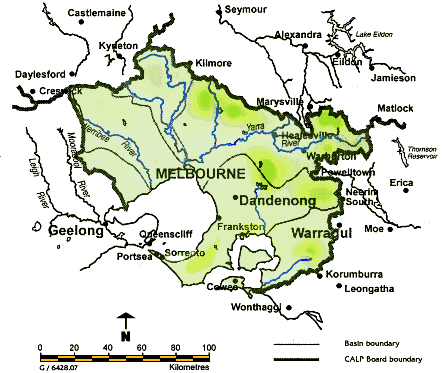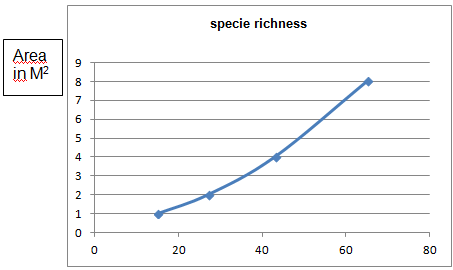Introduction
The sum of all living organisms residing in an ecological environment forms a community. In the community, the living and non-living factors interact in a manner that ensures balance in the environment.
The aspect of the living organisms-both plants and animal, sharing an environment forms an ecosystem. An ecosystem is always in a dynamic state of evolution (Newman 2000).
The world consists of several ecosystems. These different ecosystems are defined according to their unique characteristics. Several factors are responsible for the different characteristics observed in the ecosystems. These factors are either weather and climate or the living organisms that occupy the specific environment.
An ecosystem should provide an environment that supports the complex relationships of all the life forms that reside within it (Newman 2000). This work seeks to exclusively describe the characteristics of the ecosystem of Melbourne area in Australia.
Methods
Melbourne occupies the South-Eastern part of Australia and borders the ocean. based on the Koppen climate classification model, the climate of the area is described as oceanic.
Topography
To the East, the area is situated in an intersection of magma and intermediate stones from the Precambrian period. It lies along Yarra River and boarders the Dandenong ranges to the East.
To the West, Melbourne borders Marybyrnong River that flows along the foothills of the Macedon ranges. These ranges have flat volcanic planes that proceed up to the beach front.

(Waterwatch Victoria 2012)
The map shows the topography of the area.
Vegetation types
The area has a diverse plant community courtesy of the favourable weather. The coast consists of scrub family, dominated by the coast banksias. In the inland foreshow regions, woodland dominates. On the contrary, plenty of manna gum dominates the eastern side. Finally, the grassy woodland dominates the basalt-North (Newman 2000).
Wetlands
One of the most outstanding ecosystems in the Melbourne area is the wetlands. The Ramsar convention on wetlands added Port Philip wetland and the Bellarine Peninsula to its list.
Port Philip wetland is very significant in terms of the biodiversity it supports along the coastal region. It supports an approximated 580 species of plants. At the same time, the animal species occupying the ecosystem is estimated to be over 300.
Data collection
Use of quadrats
In the ecological research of the ecosystems in the Melbourne area, several data collection methods were employed. These methods included the following:
Quadrat method
A quadrat, made up of a metal square, of different sizes was randomly thrown in an identified area. The plant species within the quadrat were counted and recorded as indicated in the table below. A second area was systematically identified and the quadrat method used again to collect data on the species within the quadrat.
Eventually, a tally of the various identified species was conducted. The quadrats varied in terms of size. The four square quadrats used all had an area of 1, 2, 4 and 8 M2 respectively.
Observations
The various plant and animal species residing within each quadrat were observed and recorded based on their morphological characteristics. These characteristics were then described for each plant or animal.
Results and Discussions
A quadrat method helps describe a representative sample of a given ecosystem.
The tables below depict the results of the plant species observed.
Area 1
Area 2
Biotic components
From the data, it is important to note that the number of most species increased depending on the size of the sample area. This is shown in the figure below.

Interaction between biotic and abiotic components
Both plants and animals in Melbourne have been adversely affected by the soil structure of the area. The Northern part, which is majorly rocky, has the least animal population compared to the other areas that contain rich soils. In fact, the area recorded very limited plant population.
The rocky surface in Northern part of Melbourne, prevents water from reaching the plant roots. The plants, on the other hand, develop deep roots that crack the large rocks to smaller pieces so that the underlying rocks are eventually weathered.
Energy flow
Primary producers:
Primary producers are organisms that make their own food using simple compounds; they are mainly plants (Newman 2000). From the data, the most common primary producer was the grass specie number 4. Some grass species were shorter with very green leaves resembling blades, while others were much taller. Specie number 3 was very short and had long reddish brown leaves.
Primary consumers:
Primary consumers directly feed on the plants for example the herbivores and browsers. The short brown hare and a possum were observed in this category. These consumers feed on the barks, roots, and the flowers of plants.
Secondary consumers:
Those animals that feed on plant materials directly form the trophic level of secondary consumers. Secondary consumers feed directly on herbivores or browsers. Several examples were observed as listed below:
- Red foxes that preyed on some bird species.
- Frog mouthed owls that fed on some species of birds and possums
- White’s skink that fed on small invertebrates.
Tertiary consumers
No tertiary consumers were observed. However, the presence of the vultures could not be ruled out especially in Northern Melbourne.
Food chain

Chemical cycling
Coastal areas have plenty of dead plant materials especially the leaves. The wetlands contain plenty of decaying plant roots and leaves in the water (Widdowson 2007). In the soil, the top layer where the leaves are rotting have thick humus as compared to inner layers.
Micro-organisms are involved in the saprophytic breakdown of the plant materials into smaller absorbable units. These microorganisms are likely to be the saprophytic bacteria. They break down the complex dead matter into smaller units absorbable by plants (Specht & Specht 1999).
Conclusion
This report gives detailed study of the ecosystem of Melbourne area in Australia. It describes the unique characteristics of the area as well as the species interactions.
Reference List
Newman, EI 2000, Applied ecology and environmental management, Blackwell Science, Oxford, Eng.
Specht, RL & Specht, A 1999, Australian plant communities: dynamics of structure, growth and biodiversity, Oxford University Press, South Melbourne.
Waterwatch Victoria 2012, Melbourne Region Waterwatch Program. Web.
Widdowson, M 2007, “Laterite and Ferricrete”, in D Nash & S McLaren (eds), Geochemical Sediments and Landscapes, Blackwell, Malden, MA, pp.46-94.